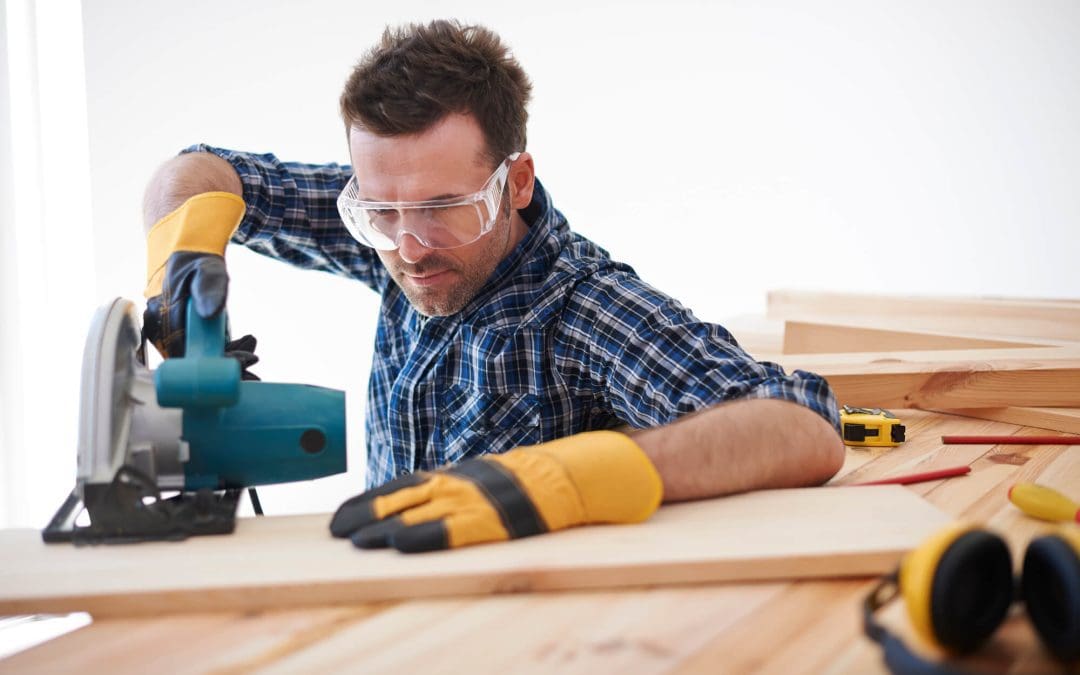DIY projects can be a fun and rewarding way to improve your home, learn new skills, and save money. However, some tasks are hazardous without the right knowledge, tools, and precautions. We’ll explore some of the most dangerous DIY tasks that homeowners should approach with caution or consider leaving to the professionals.
Dangerous DIY Tasks: Electrical Work
Electrical work is one of the most perilous DIY tasks. Dealing with electricity requires a deep understanding of wiring, circuits, and safety protocols. Even a minor mistake can lead to electric shocks, fires, or serious injury. Improperly installed electrical systems can cause long-term safety hazards, including fire risks due to faulty wiring or overloaded circuits. Always ensure that the power is turned off before working on electrical projects, and consider consulting a licensed electrician for anything beyond simple tasks like changing a light fixture.
Roofing
Roofing work involves high altitudes, steep pitches, and the potential for serious falls. It requires balance, strength, and the right safety equipment, including harnesses and scaffolding. Falls from roofs are one of the leading causes of serious injury and death in construction. Weather conditions, such as wind or rain, can make roofing even more dangerous. If your roof needs repair or replacement, it’s often best to hire professional roofers who have the experience and safety equipment to handle the job.
Plumbing
While some plumbing tasks, like fixing a leaky faucet, are relatively safe, others can be pretty risky. Working with pipes involves dealing with pressurized water systems, which can cause flooding or water damage if not handled correctly. More complex tasks, such as repairing gas lines or working on the main water supply, can be hazardous due to the risk of gas leaks or water contamination. Incorrectly installed plumbing can lead to significant damage and costly repairs down the line. It’s often wise to call a licensed plumber for major plumbing work.
Structural Changes are Dangerous DIY Tasks
Any DIY project that involves altering the structure of your home, such as removing walls or modifying support beams, can be hazardous. These tasks require an understanding of load-bearing structures and building codes. Removing a load-bearing wall without proper support can lead to structural collapse, endangering everyone in the home. Always consult a structural engineer or professional contractor before undertaking any structural modifications to ensure safety and compliance with local building regulations.
Asbestos Removal
Asbestos was commonly used in building materials before its health risks were fully understood. Disturbing materials that contain asbestos can release dangerous fibers into the air, which can cause severe respiratory diseases, including lung cancer and mesothelioma. Asbestos removal requires specialized equipment and training to ensure that fibers are safely contained and removed. It’s illegal in many places to perform asbestos removal without proper certification, so always hire licensed professionals for this hazardous task.
Dangerous DIY Tasks: Tree Work
Cutting down large trees or even heavy branches can be incredibly dangerous. Chainsaws and other cutting tools can cause severe injuries if not handled correctly. Additionally, falling branches or trees can cause significant damage to property and pose a risk to personal safety. Professional arborists have the experience, equipment, and knowledge to safely remove trees and handle emergencies, such as storm-damaged trees that pose an immediate threat.
Tiling and Flooring
Installing tile or flooring might seem straightforward, but it can involve significant risks, especially when cutting materials or handling heavy items. Tile cutting requires precision and the use of sharp tools, which can lead to serious cuts or injuries if not done correctly. Lifting and placing heavy tiles or flooring materials can also strain your back and muscles, leading to long-term injuries. Using proper safety gear and tools is essential, and for larger projects, hiring a professional can ensure the job is done safely and correctly.
While DIY projects can be a fulfilling way to enhance your home and skills, certain tasks come with significant risks. For dangerous projects, the expertise and safety measures professionals provide can prevent serious accidents and ensure the job is done right. Always prioritize safety and know your limits when considering a DIY project.
FAQs
Can homeowners safely handle minor plumbing issues?
Yes, minor plumbing issues like unclogging drains or fixing leaky faucets can typically be handled by homeowners. However, more complex tasks involving pressurized water systems or gas lines should be left to professionals to avoid risks such as flooding, water damage, or gas leaks.
How can I tell if my home has asbestos-containing materials?
Homes built before the 1980s are more likely to contain asbestos in materials like insulation, floor tiles, and roofing. If you suspect asbestos, it’s essential to have a professional inspection. Never disturb suspected asbestos materials, as this can release harmful fibers into the air.
Are there specific safety tools required for tiling and flooring projects?
Yes, safety tools for tiling and flooring include gloves, safety goggles, knee pads, and ear protection. Using a tile cutter or saw safely requires careful attention and proper technique to avoid cuts and other injuries. Heavy lifting equipment can also prevent back injuries.
How can I safely handle minor electrical repairs?
For minor electrical repairs, such as changing a light switch or outlet cover, always turn off the power at the circuit breaker before starting. Use a voltage tester to ensure the circuit is not live. If you’re unsure or the task seems complicated, consult a licensed electrician.
I Spy Inspectors provides comprehensive home inspection services to customers in Wisconsin. Contact us to schedule an appointment

